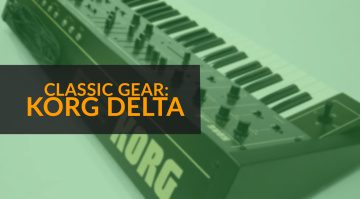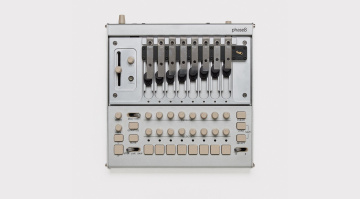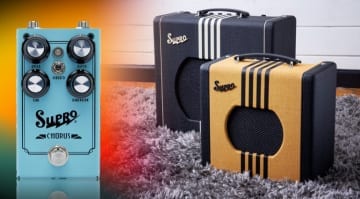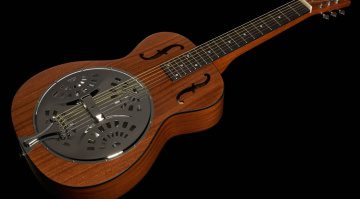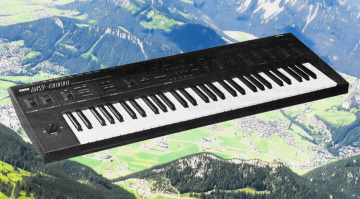I Ran So Far Away: Classic Gear – KORG Delta DL-50
A classic string synthesizer.
The KORG Delta still flies under the radar of many collectors and synth enthusiasts, but it nevertheless remains a classic-sounding synth.
Introduced in 1979, the Delta DL-50 is a 49-key paraphonic string synth that uses divide-down technology and is often referred to as the baby brother of the larger and more elaborate KORG Trident.
As an owner of KORG Delta, I’ll share with you some of my experiences, with tips on effects I use to expand its sound and some suggestions of where to look if you don’t want to take the vintage route.
Divide Down Architecture
Haven’t heard of divide-down synths or organs? You probably have a long life ahead of you. Instead of the familiar, voice-per-oscillator methods, divide-down uses a limited range of oscillators with fixed frequencies rather than VCOs.

Like many string synths of the 1970s, the KORG Delta uses a type of divide-down technology called top-octave division. This now archaic technology actually originated from 1960s transistor organs from manufacturers like Farfisa and Vox.
Here, a total of 12 fixed-frequency oscillators are used – one for each note of the chromatic scale. While the oscillators are tuned to the keyboard’s highest notes, the lower range is produced with an octave divider circuit, which explains the Delta’s drawbar-like octave sliders.
Certain synth designs like the more expensive Polymoog, or the ARP Solina – which uses ultrasonic division – evolved this technology considerably and produced incredibly unique sounds.

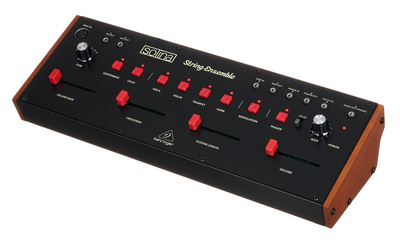
The KORG Delta’s features
At first glance, you can immediately tell that the Delta is from the ’70s, with its distinctive knobs that resemble the more famous MS-20 controls. The Delta’s sound generation is split into two independent parts, namely the synth and strings sections.
To control the levels, each of these sections has its own fader on the far right of the console above the main volume, which is also the on/off switch. Although the Delta’s architecture is relatively simple, it does have a few quirks, so let’s find out how it works.
The Synthesizer Section
Starting with the Signal Generators, the Delta can generate shapes between square and sawtooth waveforms, as the four sliders spread the range over different octaves. In addition, there’s a white noise generator for adding texture.
Meanwhile, the 24dB per octave filter uses a horizontal slider, which is different from most synths. In addition, the filter has a resonance knob and an envelope amount control with positive and negative values.
The filter also has a switch to use keyboard tracking, and there is a switch to flip between low-pass and band-pass filter modes. This is a particularly interesting addition for sound shaping, especially considering the Delta has only one global envelope.
The Strings Section
The Delta’s Strings section controls are extremely basic, with an octave balance control and a simple two-stage envelope with attack and release controls.
Furthermore, there is a two-band EQ to boost or cut the highs and lows. The EQ is particularly useful when layering sounds with both the Synthesizer and Strings sections and they both have trigger mode switches with single and multiple trigger options.
Overall, the Strings section might not offer much in terms of sound creation. However, the Delta does have a global tuning section with a control knob and octave switcher, as well as a modulation generator with vibrato depth and speed controls, to add a little character to string sounds.
Using the Delta
One of the Delta’s unique quirks, which only applies to the Synth section, is its modulation and pitch control joystick. Unlike modern controls of this nature, it does not return to zero when you let go, which perhaps leaves room for modifications in this area.
The Joystick allows FM to be applied to the oscillator section, as well as filter cutoff modulation using the global LFO or Noise as the modulation source. Once you have the signal generator octave sliders set at 10, 7, 5, and 2, from left to right, the Synth section actually starts sounding incredibly sweet for creating most sounds.
Luckily, I managed to pick up a DOD Bass Stereo Flanger FX72 from a local second-hand music store. Lush, wide stereo sounds are possible with the synth section running into the flanger pedal, and it almost becomes like a budget Roland Juno.

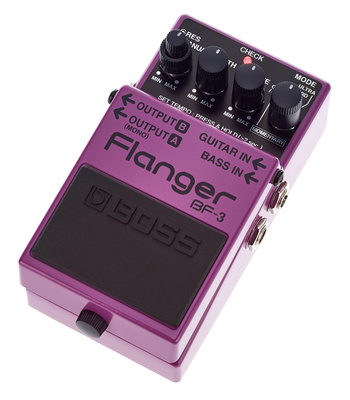
Looking for a similar sound?
While the KORG Delta is still relatively cheap for a vintage synth, it may need specialized maintenance. The parts may still be readily available, but a technician who understands divide-down synths may be hard to find, so keep this in mind.
Nevertheless, the Delta is still a classic synth with a timeless sound, used on some of our favourite records by A Flock Of Seagulls and The Human League, so there is that.
Alternatively, if you’re looking for more modern options, the Behringer VC340 uses divide-down technology. Meanwhile, the Waldorf Streichfett is a great compact digital string synthesizer that emulates the sounds of classic string machines.
Moreover, on the software side, the Nabla from Full Bucket Music is an excellent free plug-in recreation of the KORG Delta. Equally, newer options like the GForce VSM IV provide options for recreating many of the classic string synthesizers.

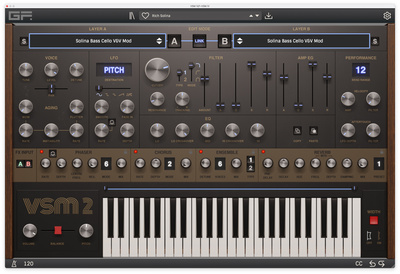

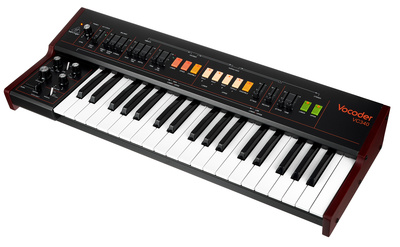

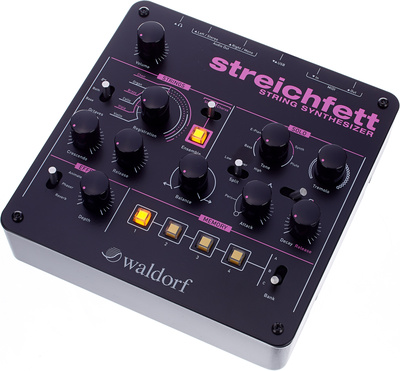
More about the KORG Delta:
- The History of KORG
- Need parts for your KORG Delta?
- More from KORG
- All about Classic Gear
*Note: This article contains advertising links that help us finance our site. Don’t worry: the price for you always stays the same! If you purchase something through these links, we receive a small commission. Thank you for your support!
 4,6 / 5,0 |
4,6 / 5,0 | 


